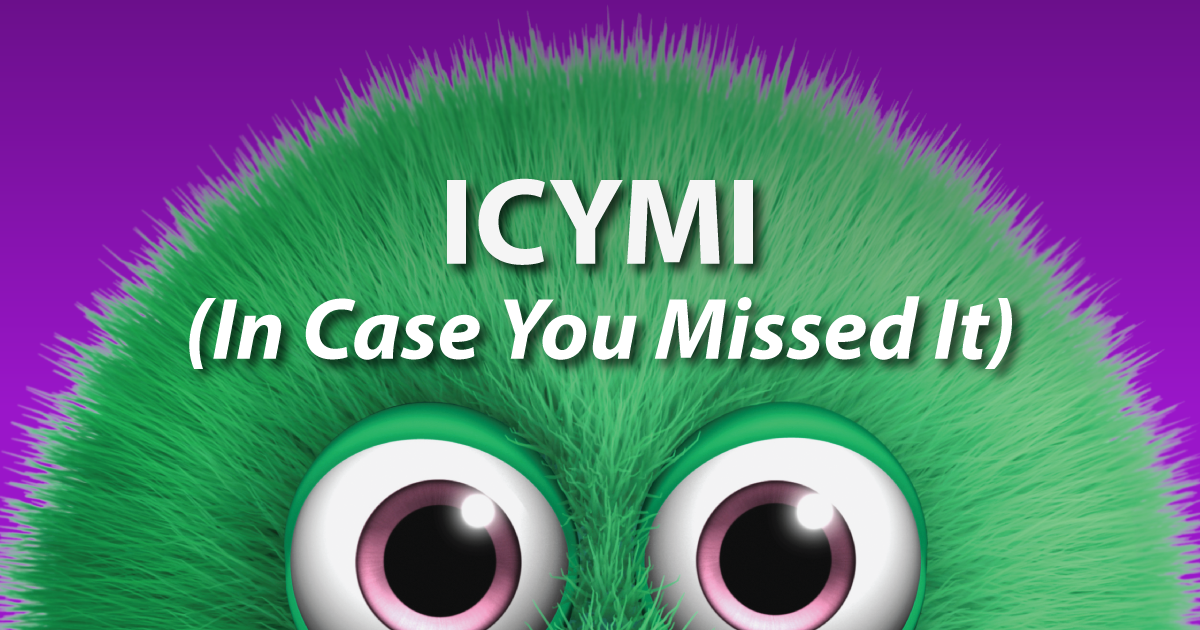
In Case You Missed It (v32)
BIG NEWS in the credit union world! Plus, 4-day work weeks, a call for transparency, Student Loan confusion, Apple Pay Later, and the Erie Canal. We’ve got something to say about all of these, and more. Here’s what we noticed, in case you missed it:
Remember the 4-day work week?
Surprise, surprise, it seems like people are happier and more productive when they get a little extra time away from their job. According to this article from Business Insider, companies that have tried out the 4-day work week were rewarded with increased productivity, profits and worker satisfaction. While there are a whole lot of factors to consider before implementing this kind of policy, it could even work for your credit union. Once you work out the logistics, your people would likely rave about how nice it is to work there. And there’s no better way to show how credit unions really are different, and really are centered on enabling human beings to have better lives.
CUNA and NAFCU to merge
This is big BIG news in the credit union world: CUNA and NAFCU just announced plans to merge. Subject to a membership vote (the Board votes were unanimous), they’re planning to form one mega-trade group called “America’s Credit Unions” by 2025. It’s hard to say much yet about what the impact will be; we’ll be watching as more answers become available.
Why not more transparency?
Beloved Credit Union curmudgeon Chip Filson asks a simple question here: why don’t credit unions provide quarterly reports to their shareholders like public companies do? Sure, busy CU CEOs don’t need yet another quarterly task, but this could also be a great opportunity to regularly tell your credit union’s story to your members, and show in dollars and cents the impacts you’re making on your members and your community — and how you’re fulfilling your mission.
Reminder: Student loan confusion is here
We’ve mentioned this before, but with payments on Federal Student Loans set to re-start soon, expect increased stress and questions from your younger members. It’s an ever-changing situation, so make sure you’re on top of it.
Should you worry about Apple Pay Later?
Apple’s buy-now-pay-later product, called Apple Pay Later, is still in pre-release as of this writing, but is expanding fast. Its success is powered by Apple’s strong existing user base, increasing general demand for BNPL as financial stress increases, and of course Apple’s usual speed and ease of use. Whatever else you learn from this, make sure you understand why your members are getting more and more comfortable with using BNPL services and fintechs in general. (Hint: “Just use your credit card” isn’t the answer they’re looking for.)
Make sure your website recruits employees, too!
For the last few years, one thing that’s been nearly universal among credit unions we’ve been talking to is that they’re in a bit of a staffing crunch (and here’s how we can help). Make sure your website is doing its part: put “Jobs” or “Careers” a prominent place, and build pages that show all the great stuff about working at your credit union. You want to give them a good idea of your culture, and the kinds of people you’re looking for, not just a dry list of benefits. Brands are about people, so you need the best fit. (And of course, make it easy to apply for a job online.)
Honestly, some CUs could stand to jazz up their job descriptions a little (without going overboard). If you’re recruiting entry-level folks, keep in mind that younger members need a credit union to believe in — and younger employees do, too. The good news is that terms like “jobs” or “careers” are usually in the top five in internal site searches on the CU sites we build.
Erie Canal History
This has nothing at all to do with credit unions, but I greatly enjoyed learning about the Schoharie Aqueduct near Fort Hunter, NY. (I subscribe to several newsletters that send out randomly interesting things.) I’ve visited many of the remnants of the Wabash-Erie canal in Indiana, and it’s mind-boggling to think about the engineering and building of massive canal projects in several states. Ultimately, financing and maintaining these enormous public works just wasn’t sustainable; railroads, roads and bridges are much easier to build and keep open. But the cultural and economic effects of the canals are still with us to this day.
- In Case You Missed It – 6.18.25 - June 17, 2025
- In Case You Missed It – 5.28.25 - May 27, 2025
- In Case You Missed It – 4.30.25 - April 29, 2025
